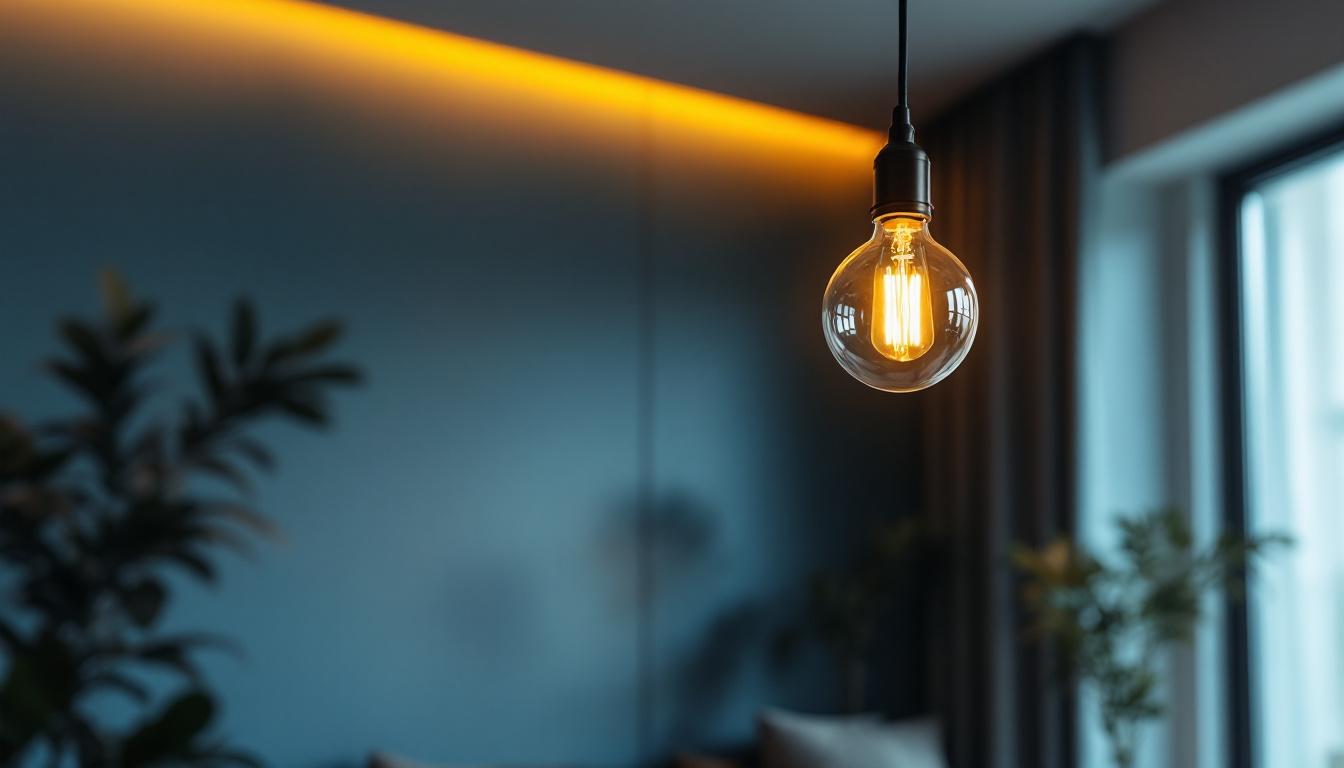
In the ever-evolving landscape of lighting technology, contractors face the challenge of keeping their projects relevant and efficient. As the demand for energy-efficient solutions grows, it becomes imperative to choose the right work lights that not only meet current standards but also anticipate future needs. This article explores essential considerations for selecting shop work lights that can effectively future-proof lighting projects.
Future-proofing in lighting projects involves selecting equipment and technologies that can adapt to changes in regulations, energy efficiency standards, and advancements in lighting technology. This proactive approach ensures that investments remain viable and effective over time. By considering factors such as scalability and interoperability, contractors can create systems that not only meet current demands but can also evolve alongside future needs, thereby maximizing the return on investment.
Failing to future-proof lighting projects can lead to significant costs down the line. Outdated lighting solutions may require frequent replacements, increased maintenance, and higher energy bills. Additionally, as regulations become stricter, non-compliance can result in fines and project delays. By investing in forward-thinking lighting solutions, contractors can mitigate these risks and enhance their project’s longevity. Furthermore, the environmental impact of outdated systems cannot be overlooked; inefficient lighting contributes to higher carbon footprints, which can be detrimental in an era where sustainability is paramount. Organizations that prioritize future-proofing not only save money but also position themselves as responsible stewards of the environment.
The lighting industry is rapidly evolving, with innovations such as smart lighting, LED technology, and IoT integration becoming increasingly prevalent. By understanding these trends, contractors can select work lights that are compatible with future technologies, ensuring that installations remain relevant for years to come. Smart lighting systems, for instance, offer features such as automated dimming, motion sensing, and remote control capabilities, which can significantly enhance energy efficiency and user experience. Moreover, the integration of IoT allows for real-time monitoring and data analysis, enabling facility managers to optimize lighting performance and reduce operational costs. As these technologies continue to advance, staying informed and adaptable will be crucial for contractors aiming to provide cutting-edge solutions that meet the evolving demands of their clients.
When selecting work lights for shop environments, several key features should be prioritized to ensure adaptability and efficiency. Understanding these features can help contractors make informed decisions that benefit both current and future projects.
Energy-efficient lighting solutions, such as LED lights, consume significantly less power than traditional incandescent or fluorescent options. This not only reduces operational costs but also aligns with growing sustainability initiatives. Moreover, energy-efficient lights often have longer lifespans, which translates to lower replacement frequency and maintenance costs. Additionally, many modern LED lights come with smart technology that allows for remote control and scheduling, further optimizing energy usage and providing convenience for shop managers who may need to adjust lighting based on occupancy or time of day.
The ability to adjust brightness and color temperature can enhance the versatility of work lights. Different tasks may require varying levels of illumination and color rendering. Lights that offer adjustable settings allow contractors to tailor the lighting to specific needs, improving both functionality and comfort in the workspace. For instance, a cooler color temperature can enhance visibility for precision tasks, while warmer tones can create a more comfortable environment during longer working hours. Furthermore, some advanced lighting systems come equipped with sensors that automatically adjust brightness based on ambient light levels, ensuring optimal visibility without manual intervention.
Shop environments can be demanding, with exposure to dust, moisture, and physical impacts. Selecting work lights with robust construction and high ingress protection (IP) ratings can ensure longevity and reliability. Investing in durable lighting solutions minimizes the risk of failure and reduces the need for frequent replacements. Additionally, features such as shatterproof lenses and rugged housing materials can provide extra protection against accidental drops or exposure to harsh chemicals commonly found in workshops. This level of durability not only safeguards the investment in lighting but also enhances safety for workers, as reliable illumination is crucial in preventing accidents and ensuring a secure working environment.
As the Internet of Things (IoT) continues to shape various industries, integrating smart lighting solutions into shop environments is becoming increasingly beneficial. These systems offer enhanced control, energy management, and adaptability, making them an attractive option for contractors. With the ability to tailor lighting to specific needs, businesses can create a more inviting atmosphere for customers while also streamlining operational costs.
Smart lighting systems can be controlled remotely, allowing contractors to adjust settings from a distance. This feature not only enhances convenience but also enables energy savings by ensuring lights are only active when needed. Automation features, such as occupancy sensors and timers, can further optimize energy usage and extend the lifespan of the lighting system. For instance, in a retail environment, lights can automatically dim during non-peak hours or brighten during busy shopping times, creating a dynamic shopping experience that adapts to customer behavior.
Many smart lighting solutions come equipped with data analytics capabilities. These systems can provide valuable insights into energy consumption patterns, helping contractors identify areas for improvement. By leveraging this data, contractors can make informed decisions that enhance efficiency and reduce costs over time. Additionally, the ability to analyze foot traffic and customer engagement with specific displays can inform merchandising strategies, allowing businesses to optimize product placement and lighting to drive sales.
Another significant advantage of smart lighting solutions is the level of customization they offer. Contractors can select from a wide range of color temperatures and brightness levels to create the perfect ambiance for any shop environment. This flexibility allows businesses to align their lighting with their branding and the psychological effects of color on consumer behavior. For example, warmer tones may create a cozy atmosphere in a boutique, while cooler tones can enhance the modern feel of a tech store. Furthermore, the ability to change lighting schemes for special events or seasonal promotions can keep the shopping experience fresh and engaging for repeat customers.
Smart lighting solutions can seamlessly integrate with other smart systems within a shop, such as security cameras, HVAC systems, and even point-of-sale systems. This interconnectedness allows for a holistic approach to shop management, where lighting can be adjusted in response to changes in temperature or occupancy detected by other devices. For example, if a security system detects movement after hours, the lighting can automatically activate to deter potential intruders. This level of integration not only enhances security but also contributes to a more efficient and responsive shop environment, ultimately leading to a better overall experience for both staff and customers.
Adhering to industry standards and regulations is crucial for any lighting project. Ensuring compliance not only avoids potential fines but also guarantees that the lighting solutions meet safety and performance benchmarks.
Various energy codes and regulations govern lighting installations, and staying informed about these requirements is essential for contractors. Selecting work lights that meet or exceed these standards can simplify the compliance process and enhance the project’s credibility.
Safety is paramount in any work environment. Choosing lighting solutions that comply with safety standards, such as those set by Underwriters Laboratories (UL) or the American National Standards Institute (ANSI), ensures that the products are reliable and safe for use in demanding environments.
Different applications within a shop environment may require specific lighting solutions. Understanding these applications can help contractors select the most suitable work lights for each scenario.
For general workspace lighting, a combination of ambient and task lighting is often ideal. Ambient lighting provides overall illumination, while task lighting focuses on specific areas where detailed work is performed. Using adjustable LED lights can enhance flexibility and cater to varying tasks within the workspace.
For tasks that require precision, such as assembly or inspection, high-quality task lighting is essential. Lights with high color rendering index (CRI) ratings can help accurately depict colors and details, which is crucial for quality control. Additionally, adjustable brightness settings can help achieve the optimal lighting conditions for intricate work.
In situations where outdoor or temporary lighting is needed, portable work lights can provide the necessary flexibility. These lights should be lightweight, durable, and easy to set up. Battery-operated options can also be beneficial for areas without access to electrical outlets, ensuring that work can continue uninterrupted.
While the initial cost of lighting solutions is an important consideration, evaluating the long-term value is equally crucial. Understanding the total cost of ownership can help contractors make informed decisions that align with their budget and project goals.
Energy-efficient lighting solutions may have a higher upfront cost but can lead to significant savings over time. Lower energy consumption, reduced maintenance needs, and longer lifespans contribute to a lower total cost of ownership. Contractors should weigh these long-term benefits against initial investments to determine the best options for their projects.
Calculating the return on investment for lighting solutions can provide valuable insights into their financial viability. Factors such as energy savings, reduced maintenance costs, and improved productivity should be considered when assessing ROI. By presenting a clear case for the financial benefits of future-proof lighting, contractors can make a compelling argument for their clients.
The lighting industry is continuously changing, with new technologies and trends emerging regularly. Staying informed about these developments is essential for contractors looking to future-proof their projects.
Attending industry conferences, trade shows, and workshops can provide valuable insights into the latest lighting technologies and best practices. Networking with other professionals can also lead to collaborations and partnerships that enhance project outcomes.
Investing in continuous education and training for staff can ensure that contractors remain knowledgeable about the latest advancements in lighting technology. Online courses, webinars, and certifications can help professionals stay ahead of the curve and better serve their clients.
Future-proofing lighting projects is a critical consideration for contractors looking to enhance their offerings and ensure long-term success. By understanding the importance of energy efficiency, integrating smart technologies, and adhering to industry standards, contractors can select work lights that meet current needs while anticipating future demands. Investing in quality lighting solutions not only benefits the bottom line but also contributes to a more sustainable and efficient work environment.
Ultimately, the right approach to shop work lights can make a significant difference in project outcomes. By prioritizing durability, adaptability, and compliance, contractors can create lighting solutions that stand the test of time, ensuring that their projects remain relevant and effective for years to come.
Ready to elevate your lighting projects with the most advanced, future-proof solutions? Look no further than LumenWholesale. Our extensive selection of spec-grade lighting products combines quality with affordability, ensuring you’re equipped with the best for less. Say goodbye to middleman markups and hello to unbeatable wholesale prices, all while enjoying the convenience of free shipping on bulk orders. Don’t compromise on your lighting needs—choose LumenWholesale for a seamless blend of durability, adaptability, and compliance. Wholesale Lighting at the Best Value is just a click away. Secure your next project’s success with us today.

Discover the critical role of trail lighting in enhancing safety and aesthetics for outdoor spaces.

Discover essential tips and common mistakes to avoid when installing 4-foot LED strips with insights from experienced lighting contractors.

Discover the essential best practices lighting contractors use when installing single light pendants.

Illuminate your projects with confidence! Discover essential insights and expert tips on outdoor solar stake lights that every lighting contractor should know to enhance efficiency, sustainability, and client satisfaction..